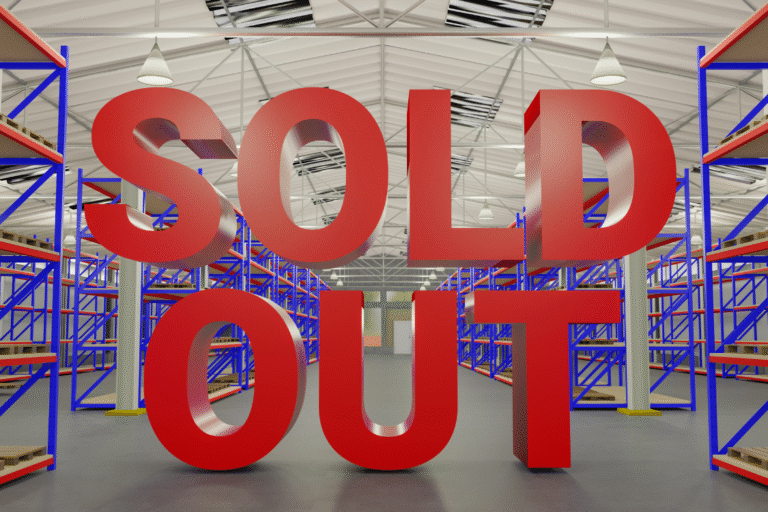Switching manufacturers can save money, but it can also drain resources if the numbers don’t add up. A partner promising lower production costs is tempting, yet hidden risks often sit behind the initial quote. A switch manufacturer cost savings calculator brings clarity by showing the real numbers, from labor and packaging to transition fees and time savings.
Instead of guessing, leaders can calculate the total cost, review the long-term return on investment (ROI), and see if the change truly improves margins. With the right tool, companies can quantify savings, compare results, and future-proof operations. The key is simple: use data to protect both profitability and reputation.
Why Cost Savings Matter When Considering a Switch
Cost savings are typically the primary reason a company considers switching manufacturers. Still, the impact extends beyond the price on a single invoice. Even small improvements can significantly reshape how resources are utilized, enhance efficiency across operations, and free up funds for growth.
The power of even a 5% reduction
Cutting just 5% from production costs can turn into thousands of dollars each month for companies ordering in bulk. That money can be reinvested into technology, training, or customer support. Using a savings calculator shows how even modest reductions deliver real business value over the course of a year.
Balancing savings with stability
The lowest quote is not always the best solution. Manufacturers offering rock-bottom prices may skip testing, reduce labor quality, or cut back on supplies. Choosing stability protects sales, quality, and long-term profitability. Strong partners ensure reliable operations, avoiding costly fixes later.
Avoiding hidden costs in the switch
Every switch carries added expenses. Shipping changes, setup requirements, or retraining in-house teams can eat into projected savings. A savings calculator helps companies identify these costs, incorporate them into the analysis, and determine if the move still makes sense.

What Is a Make vs Switch Calculator?
A make vs switch calculator is a tool that compares your current manufacturer’s costs with projected quotes from new partners. It is designed to move beyond guesswork and provide a dependable estimate of the total cost.
Defining the tool
The calculator highlights the gap between staying with your current partner and switching to a new one. It adds up labor, assembly, and service costs, then shows a precise result. For businesses in the industry, it provides a way to calculate savings with real numbers instead of relying on instinct.
What it measures
The calculator takes into account raw materials, packaging, labor, testing, utilities, shipping, and other associated costs. Including these factors provides a comprehensive picture of production costs and highlights where efficiency gains can be achieved.
Why it’s valuable for entrepreneurs
For an entrepreneur, changing manufacturers is a significant investment. This tool translates complex information into actionable insights. It helps leaders identify which partner adds the most value, assess long-term ROI, and make informed choices that support growth.

Key Factors to Include in a Switch Savings Calculator
The accuracy of a savings calculator depends on what you put into it. To calculate effectively, companies must include all relevant information. Missing details can make a new partnership look better than it truly is.
Current manufacturer costs
Start with your current numbers. Add raw materials, packaging, testing, labor, and shipping. This baseline shows where money is already being spent and helps identify inefficiencies.
New manufacturer quotes
Request a precise, itemized quote from each potential partner. Break out supplies, labor, and testing. Comparing these numbers side by side makes it easier to check service levels and real savings.
Transition costs
Switching brings its own challenges. Expenses for label changes, regulatory paperwork, and onboarding are common. Even short downtime during production shifts can raise the total cost. These factors must be added to the calculation.
Long-term price stability
Savings matter only if they last. Look for contracts with stability clauses or written guarantees. Without them, early savings may disappear after a few months, leaving the company with higher costs and more resources tied up in problem-solving.

How to Use the Calculator to Compare Costs
The process works best when followed in a step-by-step manner. Each action builds toward a clearer estimate of long-term savings and potential ROI. A comprehensive approach ensures that no detail is overlooked.
Step 1: Collect itemized quotes from both manufacturers
Request clear breakdowns of labor, packaging, testing, and logistics from both your current and potential partners. Transparency is essential for an accurate comparison.
Step 2: Enter numbers into the calculator
Input the costs into the savings calculator. Include production, labor, raw materials, testing, and transportation to calculate the total cost for each option.
Step 3: Add hidden or one-time costs
Transition costs, such as training, setup, and storage fees, can add up quickly. Insert these details into the calculator to learn the true result of switching.
Step 4: Analyze long-term impact
Look at savings over 12 to 24 months instead of a single day or month. This longer view helps businesses realize whether efficiency gains will outweigh short-term challenges and provide a positive return.
Red Flags When Considering a Switch
A low price tag can hide problems that cost more later. Watch for these signs before committing to a new manufacturer:
- Lowest price but no testing or compliance proof
- Vague or missing itemized breakdowns
- Lack of clear pricing stability clauses
- Excessive transition costs that wipe out savings

Checklist for Deciding Whether to Switch
A quick checklist helps confirm if the numbers—and the partnership—make sense:
- Itemized cost breakdown from both manufacturers
- Projected savings equal to or greater than 5% annually
- Transition costs calculated and manageable
- Long-term price stability guaranteed
- No compromises on quality or compliance
Beyond the Numbers: Relationship Factors to Weigh
Switching isn’t only about cost. The relationship with a manufacturer influences how well your company can operate, scale, and serve customers over time.
Communication and transparency
Strong partnerships depend on open communication, where manufacturers provide clear information on pricing, production, and resources. Research shows that transparency in business vision, strategies, and relevant knowledge helps strengthen trust and enhance long-term relationships (Su, Fang, & Young, 2011). Sharing data openly reduces delays, creates mutual understanding, and signals professionalism, which makes partners more willing to maintain and grow the relationship.
Flexibility and scalability
Manufacturers that adapt to new products, higher order volumes, or shifts in demand provide greater long-term value. This flexibility enables operations to remain efficient as the business expands.
Reputation and client history
A manufacturer’s reputation is closely tied to the strength of its business relationships. Long-term partnerships thrive when trust, mutual understanding, and effective collaboration are present, which directly reflects on a partner’s reliability and commitment. Exploring reviews, case studies, and client histories provides insight into whether a manufacturer has consistently delivered quality and maintained productive relationships over time.

Calculate Cost Savings Before You Switch
Switching manufacturers can lead to significant cost savings, but success depends on considering the complete picture. Using a switch manufacturer cost savings calculator helps you calculate the total cost, factor in transition expenses, and check long-term stability.
The tool enables companies to quantify savings, explore ROI, and determine whether changes will actually improve profitability and efficiency. Before choosing a new partner, analyze the numbers, watch for red flags, and select a manufacturer who provides both value and reliability. Smart decisions today help future-proof your business and protect the quality your customers expect.
Frequently Asked Questions
What is a make vs switch calculator in manufacturing?
A make vs switch calculator compares your current manufacturer’s total cost with new quotes, helping you quantify potential cost savings.
How do I know if switching manufacturers is worth it?
It’s worth switching if projected savings outweigh transition costs and long-term service and product quality remain stable.
What costs should I include in a switch manufacturer cost savings calculator?
Include labor, raw materials, packaging, shipping, testing, and onboarding processes to view the complete cost.
Can switching manufacturers reduce profitability?
Yes, profitability can decline if hidden fees, supply challenges, or unstable pricing cancel projected savings.
What’s a realistic savings goal when changing manufacturers?
Most companies seek at least 5% annual cost savings, along with stable contracts, to secure a strong return on investment (ROI).
References
- Gupta, V. (2022). Accounting for small business owners (Chapter 8: An analysis of business partners relationship). Alexis Press. https://alexispress.us/wp-content/uploads/2022/07/Accounting-for-Small-Business-Owners.pdf#page=64
- Su, H. Y., Fang, S. C., & Young, C. S. (2011). Relationship transparency for partnership enhancement: An intellectual capital perspective. Journal of Business & Industrial Marketing, 26(6), 456–468. https://doi.org/10.1108/08858621111156449





